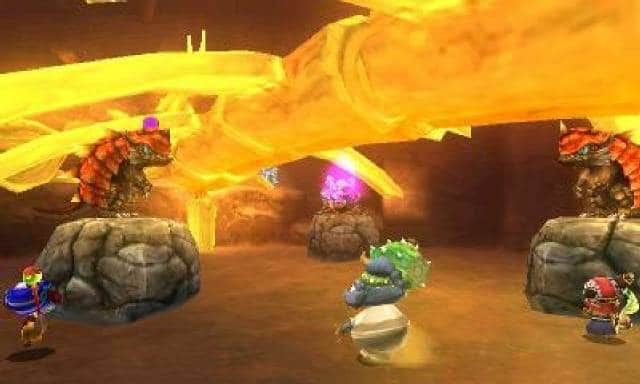To make the tree …
Ever Oasistells the story of Tethu (the default name that can be changed, like sex and complexion), a bulbous one that lives in the oasis created by his older brother, the last glimpse of civilization and livability amidst a deserted arid , pervaded by the malice of Chaos. You will be wondering what a bulb is. Soon it is said: we talk about half living beings among humans and plants, which grow from seeds and which are in turn capable of planting them and creating lush vegetation. The village created and planted by Tethu’s older brother, however, is struck by one of the creatures of the Chaos, a mysterious malignant force that corrodes all the life forms that it touches, and only the sacrifice of the family allows Tethu to escape .
The fate, apparently mocking,
Needless to say, joining the forces, thanks to the powers of the water fairy and the talent of Tethu, the bulb of the Great Tree, the two will create a new, small oasis that will attract travelers exhausted and give hope to all the inhabitants of the area: Tethu’s unmanageable goal, then, is to understand and defeat the Chaos, finding his brother in the process.
Thanks to a great job of localization, the arabious fairy conceived by Koichi Ishii keeps it light in tone, presenting all the critiques of the classic fairy tale adapted to the modern public, from stereotyped characters to sympathetically familiar situations for all those who also played just a couple of JRPGs in their lives.
From the beginning, in the end, it is obvious that fiction is gameplay, which, together with some original game design choices, help Grezzo’s creature to stand out from the mass, despite a handful of similarities to the highly successful Fantasy Life title signed by Level 5 and released on 3DS in 2014.
A bit of everything’
Ishii-san’s sources of inspiration are numerous and quite evident, and nevertheless, Ever Oasis maintains its character that can distinguish it from its predecessors: from the never-too-praised series of Secret of Mana (which Ishii was responsible for ) to Zelda’s portable adventures, through the aforementioned Fantasy Life: the heart of gaming experience is that of an action adventure with role-playing and managerial shades, though none of these aspects is sufficiently deepened.
The player controls only Tethu in the first few hours of play, then gain access to a good number of characters, each with its peculiar characteristics: Miura, the first to join Tethu, is a fierce fighter with a spear that permits, among other things, hanging on the walls with hangings and leveraging to overthrow very heavy objects.
Very soon they will join the group of adventurers including Roto, equipped with a comfortably boomerang and capable of taking a spherical shape to enter very narrow passageways (someone said Metroid?), And Jasper, capable of treading treasures and hidden objects with his Shot: Although you control them only one at a time, the player can move from one member of the group to the other by simply pressing the directional cross to solve the many puzzles scattered around the dungeons or select the most suitable fighter to the situation. The enemy bestiary, in fact not too nutritious, consists of strong creatures against certain attacks and weaknesses against others: just to give an example,
The combat system itself is quite basic, with a strong attack button, one for the quick one, and one for the special power for each character: enemy resistance is minimal, and from now on the player gets a skill that allows him to be resurrected at the first death. In addition to wandering around the various locations in search of particular objects, relics and monsters, the player has to enlist as many inhabitants as possible for his oasis, satisfying his demands and investing gems to support his business: who sells fruit, who objects, those who drink, and everyone needs their stock to refresh when exhausted, to fall on the shoulders of the player.

